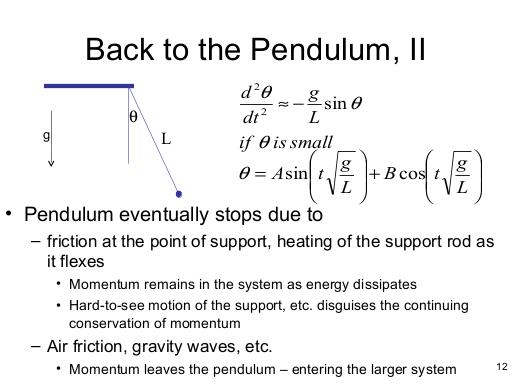
NOTES
The usual analysis of a pendulum's motion results in a prediction of perpetual periodic motion. The pendulum's energy dissipates in two ways - internally, through friction at the point of support and heating of the support as it flexes (and other similar effects), which transfer momentum from one part of the system to the other, allowing the countervailing momenta of the pieces of the pendulum system to cancel each other out and externally, through interactions with the outside world, like air friction and gravity waves, which transmit momentum to the outside world. So as the pendulum's motion decreases, momentum apparently disappears - partially because some was always hard to see (like the flexing of the support) and partially because some is moving out into the larger world.
